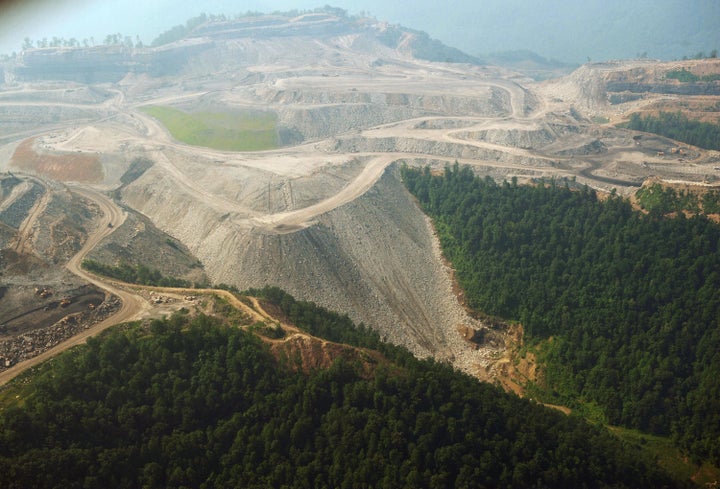
While a great deal of attention has been focused on Congress, the real action in U.S. climate policy over the past two years has been at the state and local level and in the U.S. EPA. Municipalities like New York City have moved to reduce greenhouse gasses emissions with more energy efficient building codes and programs like Mayor Bloomberg's plan to plant one million trees. Meanwhile EPA's tortoise-like regulatory process has been making slow and steady progress to set a regulatory cap on greenhouse gas emissions. Since the U.S. Supreme Court's 2007 ruling that greenhouse gasses could be regulated as an air pollutant under the Clean Air Act, EPA has been moving to collect information on emissions and then put in place a set of rules that would gradually kick in over the next decade.
Meanwhile, the fellahs in the Senate, Senators John Kerry (D-Mass.), Lindsey Graham (R-S.C.) and Joe Lieberman (I-Conn.) are putting together an energy and climate bill that would strip EPA of some of its authority to regulate greenhouse gasses under the Clean Air Act and prohibit state and regional cap and trade programs. Now that the health bill is finally off the agenda, the climate and energy dance begins in earnest.
There are a number of political facts that will guide this process between now and the mid-term elections in November. First, President Obama will be focusing on jobs and the economy between now and November, so climate and energy will only gain traction as part of an economic initiative to create jobs. Second, a Senate bill that is substantially weaker than Waxman-Markey will not survive a conference and could be opposed explicitly or implicitly by the White House with the argument that EPA's regulatory cap is a stronger environmental law.
Clearly the move against EPA in the Senate is a political strategy to appease anti-regulatory forces in the Congress and the business community. A new national standard limiting greenhouse gases could be established without removing old authorities in the Clean Air Act. A Senate bill could easily add to EPA's regulatory authority and encourage them to shift their administrative initiative from the Clean Air Act to a new and better crafted piece of legislation. The choice could be left to EPA. In fact, due to the need for certainty and the possibility of legal challenges to a new bill, EPA and the Administration should retain the right to use the Clean Air Act to limit greenhouse gasses. Limiting EPA's authority is not necessary and creates a symbolic debate that Kerry and his colleagues will lose.
A comprehensive approach to climate policy is needed and should include efforts to address the energy crisis, However, a plausible case can be made that the U.S. is putting in place a workable, if imperfect greenhouse gas regulatory program. It is unlikely at this point that President Obama will expend massive amounts of political capital to get a climate bill out of Congress. If a reasonable one emerges, he probably will support and sign it, but a controversial bill limiting EPA and state authority is not going to get anywhere. Health care became a must-win battle for the President. Climate policy will not develop in the same way.
The energy issue may very well get separated from the climate issue, by the argument that EPA is handling climate. If this happens, a bill that provides capital for energy efficiency retrofits and infrastructure, pays for energy research and development, and creates jobs in a massive effort to create a green energy economy could get somewhere. I work at a university, so to some degree I should be seen as a lobbyist for research funds. Special pleading aside, I really think that in addition to moving energy technology off of the shelf into more rapid use, we need to focus resources and attention on energy research. Research should focus on solar cells and batteries, smart grids, carbon capture and storage, non-fission nuclear, wind and geothermal technologies. We need to unleash our brainpower on all possible solutions to the transition to the post-fossil fuel energy economy. Just as defense and interstate highways steered economic development in the U.S. after World War II, investment in the energy future can make our economy more efficient, secure and prosperous in the 21st century.
Investment in the research and development of improved energy will pay off. One of the problems with the federal budget is the absence of a capital budget. It is difficult to separate deficits that come from overspending on annual expenses from borrowing for capital facilities and investments that result in wealth creation or long term benefits. There is a long tradition in America of public investment in infrastructure. Government has always invested in roads, trains, ports and power. An important part of that tradition is a division of labor and funding with private partners. The Defense department invented the internet, but at a crucial point in its development, the department made an effort to commercialize the web through the private sector. We need to develop a sophisticated national strategy of research, development and commercialization of the energy technologies I mentioned earlier. In the midst of all of this posturing and symbolic energy and climate politics, it would be great if somebody in Washington could focus on the serious business of creating a real energy policy for the 21st century. Perhaps we could do it next winter in the 90 days between the mid term election and the start of the 2012 presidential campaign.
